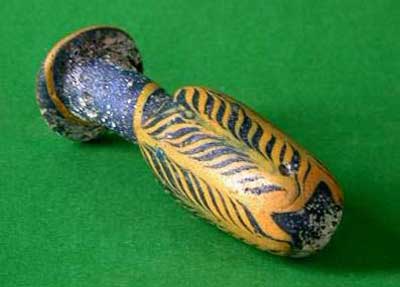Around 2nd century A.D. from Afganistan?
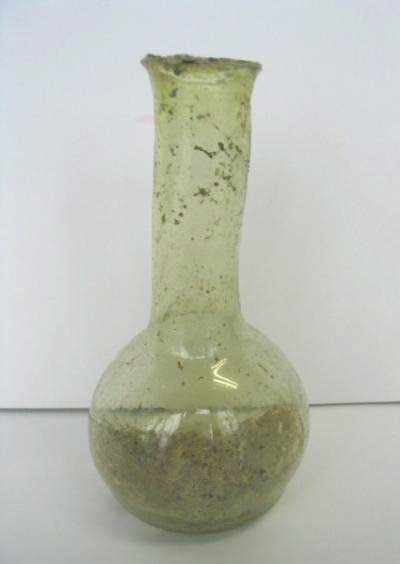
Above; side view, Below; bottom view.
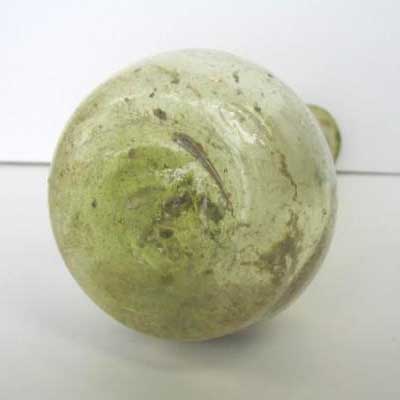
You can see the ponte mark at the bottom.
The discovery of glass
Natural glass has existed since the beginnings of the solar system, formed from the melted
rocks as a result of high temperature such as volcanic eruptions, lightning strikes or the impact
of meteorites, and then coolded solidify rapidly. Stone age people is believed to have used
cutting tools made of obsidian and tektites.
According to the Roman naturalist Pliny (Gaius Plinius Secundus; AD 23-79), Phoenician
merchants transporting stone actually discovered glass (or rather became aware of its existence
accidentally) in the region of Syria around 1000 BC. Pliny tells how the merchants, after landing,
rested cooking pots on blocks of nitrate placed by their fire. With the intense heat of the fire, the
blocks eventually melted and mixed with the sand of the beach to form an opaque liquid.
Roman Glassmaking
Romans to be the leaders in glassmaking with the use of the blowpipe. It was thought to be most
likely created by a Phoenician artist around 50 A.D.; Roman glassmakers got their chance to master it.
The blowpipe allowed them to create new shapes and forms of glass. Finally, their works need not be
exclusively objects of luxury and their production costs were diminished. Then Roman people could
buy glass objects such as cups within affordable price. So the Glass is familiar to ordinary peoples
daily life.
Iridescence
The enamel-like shell covering the vessels is very brittle and susceptible to flaking.
The outer shell breaks away, it exposes the flimsier individual silica films beneath and disrupts their
integrity: the coatings become patchy and variable in thickness.
To the human eye, the patches scatter light in such a way as to produce a brilliant peacock feather
look that we call iridescence.
The environment in which the glass vessels are stored today must remain moist or else the layers
of silica gel will dry out and crumble. All the weathering layers are fragile and tend to break away
if the glass vessel is handled too often.
Roman Bottle
Around 2nd century A.D. from Afganistan?

Above; side view, Below; bottom view.

You can see the ponte mark at the bottom.
Iridescenced Roman Glass-1
Around 2nd century A.D. from the middle east.
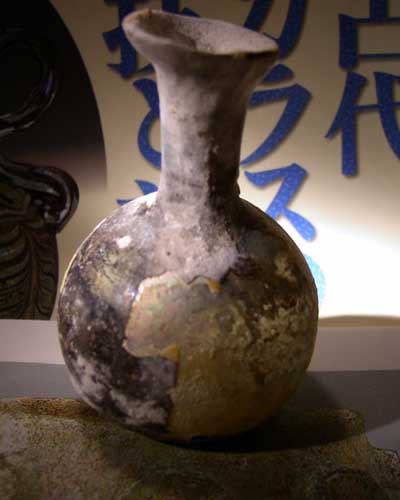
Silver and rainbow color surrounding this bottle.
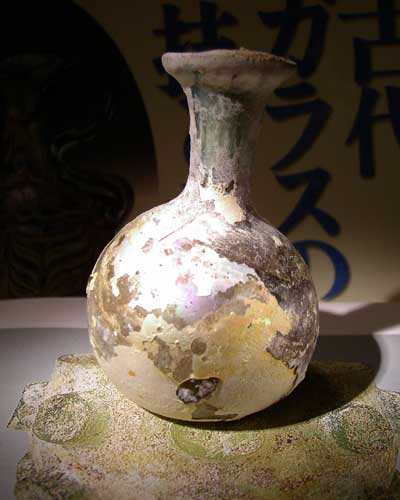
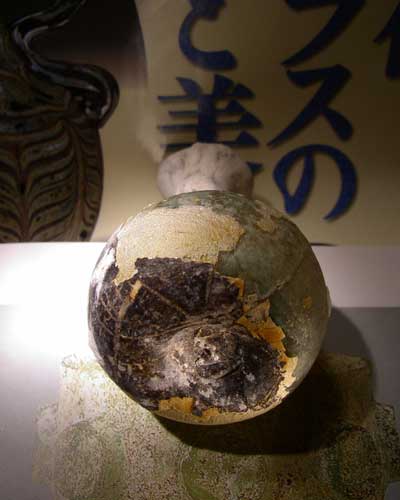
You can see the ponte mark at the bottom of this bottle.
Iridescenced Roman Glass (tear drop type)
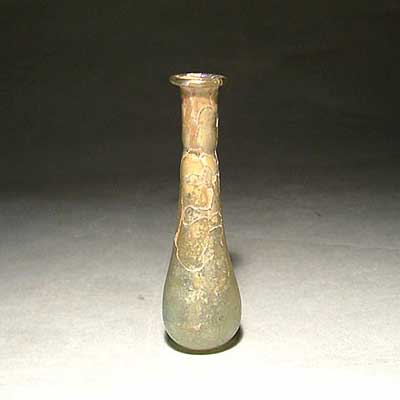
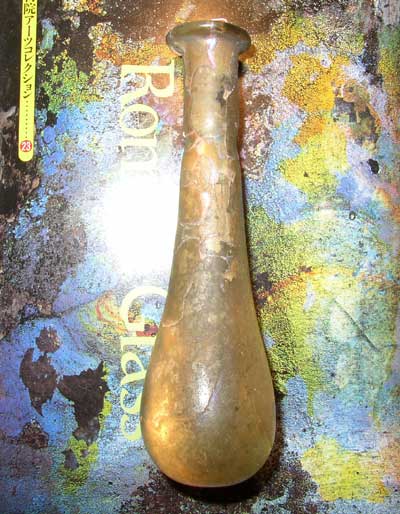
This teardrop type bottle thought to be as a perfume bottle.
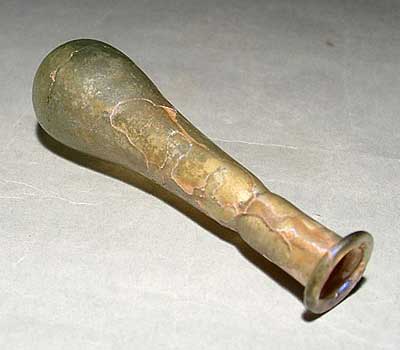
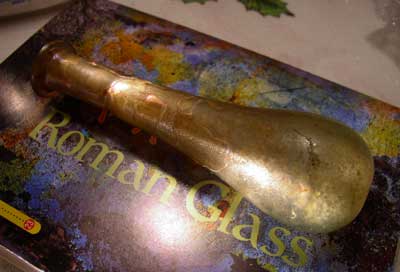
Decorated Roman Glass 2nd century A.D. fron Jordan.
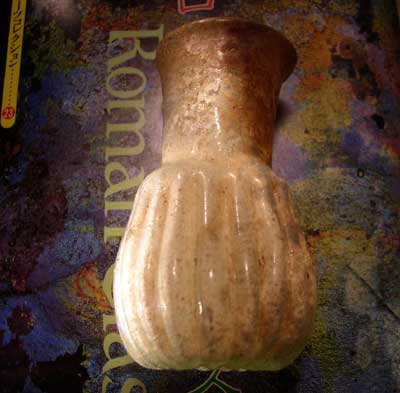
How to form this bottle? It was a master's work.
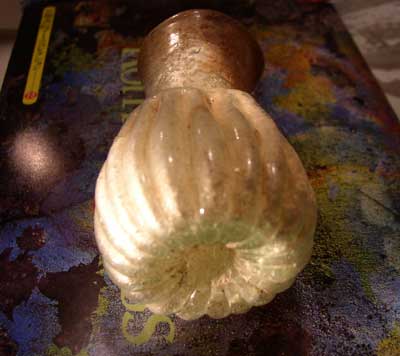
Iridescenced Roman Glass-X
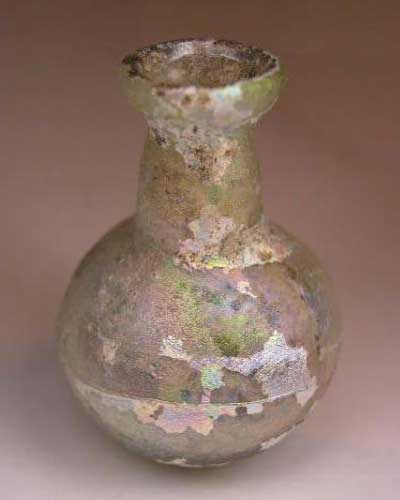
This bottle was sold on the Yahoo auction.
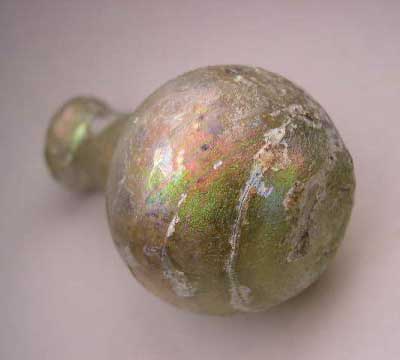
The price was increased up to 25,000 yen; so, I couldn't buy it.
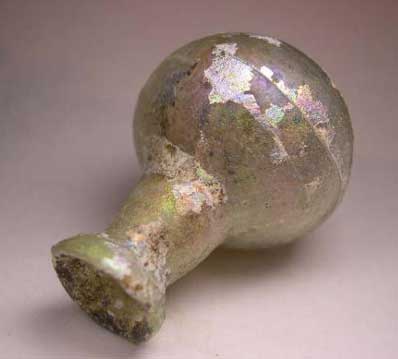
This is the memory of my competition.
Punic Core Glass 500 B.C.
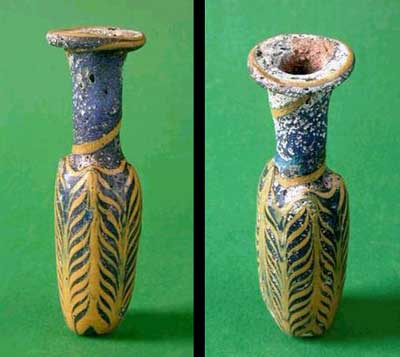
This glass was made at Punic around 500 B.C. Core glass tequnick was used.
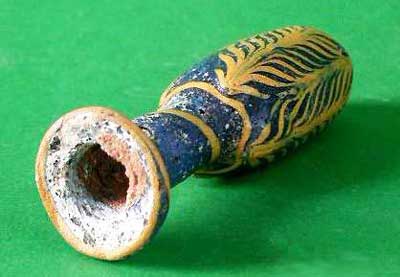
It was sold on the auction, but it's cost 580,000 yen! I couldn't buy it.
